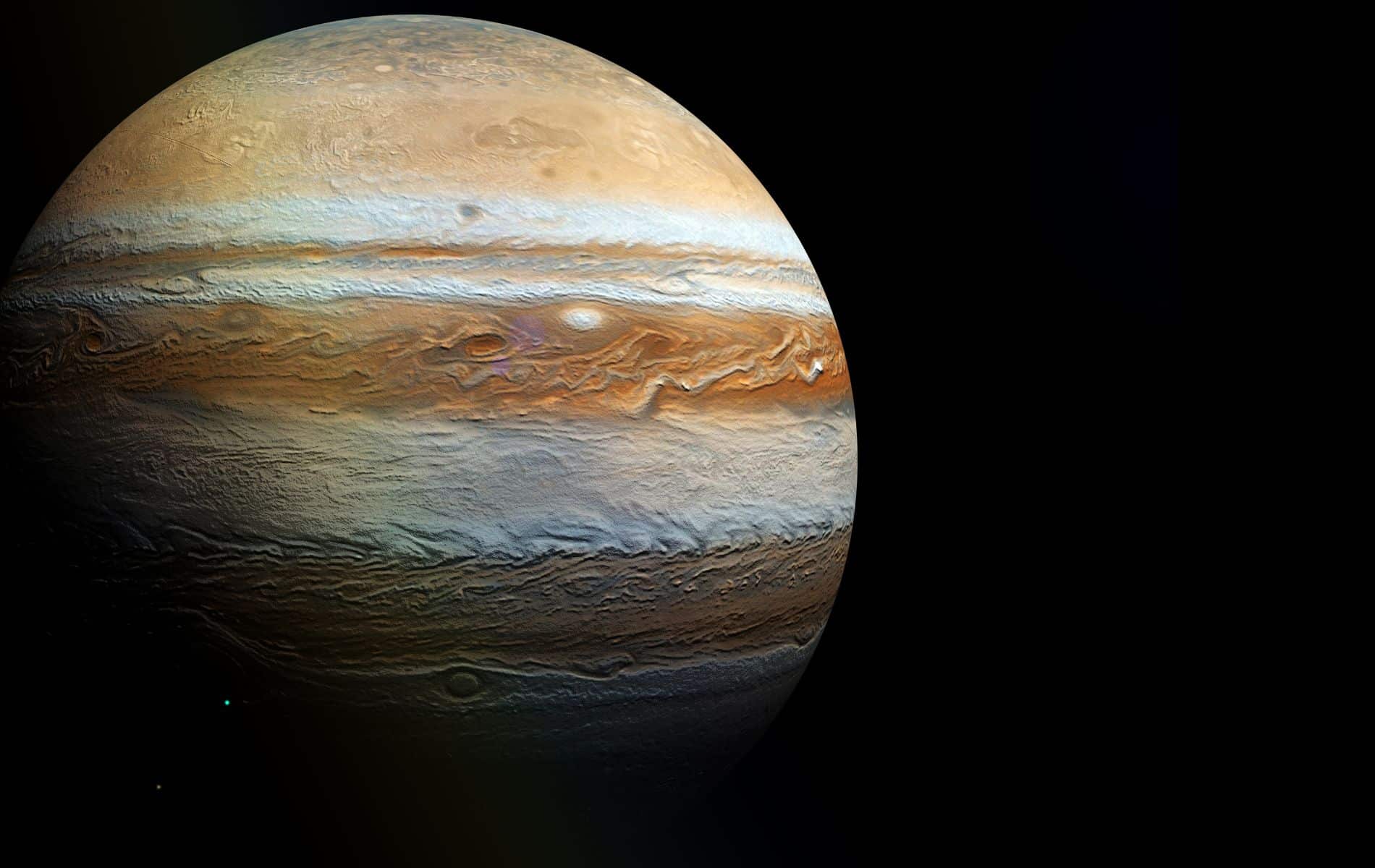A telescope has peered into the region above Jupiter’s famous Great Red Spot and discovered a series of new, never-before-seen features.
Jupiter is undoubtedly one of the most striking objects in the night sky. Moreover, the massive gas giant is easy to see on a clear night. Aside from the bright northern and southern lights in the planet’s polar regions, the glow of Jupiter’s upper atmosphere is faint, making details difficult to see with ground-based telescopes. But fortunately we have the James Webb Telescope, which thanks to its sensitivity to infrared light is able to study Jupiter’s upper atmosphere directly above the Great Red Spot with unparalleled precision.
Jupiter is known for its colorful bands and huge swirling storms. The most famous storm – and perhaps the most famous in the entire solar system – is the Great Red Spot; A massive anticyclone has been raging over the gas giant for many years. The Great Red Spot is a massive atmospheric vortex, roughly the size of the Earth’s diameter. On its outer edges, winds blow at speeds of up to 450 kilometers per hour. The red color results from chemical reactions in the atmosphere, providing a striking contrast with the gas giant’s pale clouds. The Great Red Spot has fascinated generations of scientists. This has to do with its size, but also with the fact that the storm is visible even with small telescopes. Last week it was announced that the Great Red Spot is smaller than thought. Although this massive storm, at 190 years old, is still the longest-lived tornado in the solar system, it does not look the same as the one observed by astronomer Giovanni Cassini in 1665.
Jupiter’s upper atmosphere is the transitional layer between the planet’s magnetic field and the main atmosphere. This region features the bright, vibrant northern and southern lights, powered by volcanic material ejected from Jupiter’s “pizza moon” Io. Near the equator, the structure of this atmosphere is affected by incoming sunlight. Because Jupiter receives only 4 percent of the sunlight that reaches Earth, astronomers thought this region would be fairly uniform.
boring
In July 2022, Jupiter’s Great Red Spot was observed using the Webb telescope Near Infrared Spectrometer (NIRSpec), where Integrative field unit The instrument was used. The goal was to study whether the area directly above the famous hurricane was really as faint as scientists thought. But to their surprise, they have now discovered that the upper atmosphere contains a variety of complex structures, including dark arcs and bright spots, according to the report. Nature astronomy. “Maybe we naively assumed that this area would be really boring,” says team leader Henrik Millen. “But it actually turns out to be just as interesting as the northern lights, if not more interesting. Jupiter never ceases to surprise us.”
Gravitational waves
In short, what was once considered an ordinary area now appears to contain a variety of complex structures and activities. Although the light emission from this region is caused by sunlight, the team suggests that there must be another mechanism influencing the shape and structure of the upper atmosphere. “One way to change this structure is through gravitational waves,” Henrik explains. “This is like waves crashing on a beach and causing ripples in the sand. These waves originate deep in the turbulent lower atmosphere surrounding the Great Red Spot. They can travel to higher layers, leading to changes in the structure and emissions of the upper atmosphere. Such atmospheric waves can also be seen Sometimes on Earth, but they are much weaker than those observed by Webb on Jupiter.
Follow up research
The team hopes to conduct follow-up research with Webb on Jupiter’s complex wave patterns in the future. For example, they want to know how these patterns move in the planet’s upper atmosphere. They also want to gain more knowledge about energy balance in this area and study how its properties change over time.
juice
But not only that. These discoveries may also be of interest to the European Space Agency Explorer of Jupiter’s icy moons (Juice), which was launched on April 14, 2023. Joyce will conduct wide-ranging observations of Jupiter and its three large oceanic moons – Ganymede, Callisto, and Europa (read more about the mission here). The mission aims to characterize these moons, while examining Jupiter’s complex environment in detail.
Thanks to newly gained knowledge about Jupiter’s atmospheric processes and dynamics, we have an increasingly better picture of this still mysterious planet and its moons. We hope that this will not only increase our understanding of our solar system, but will also contribute to our knowledge of gas giants and their moons elsewhere in the universe.





